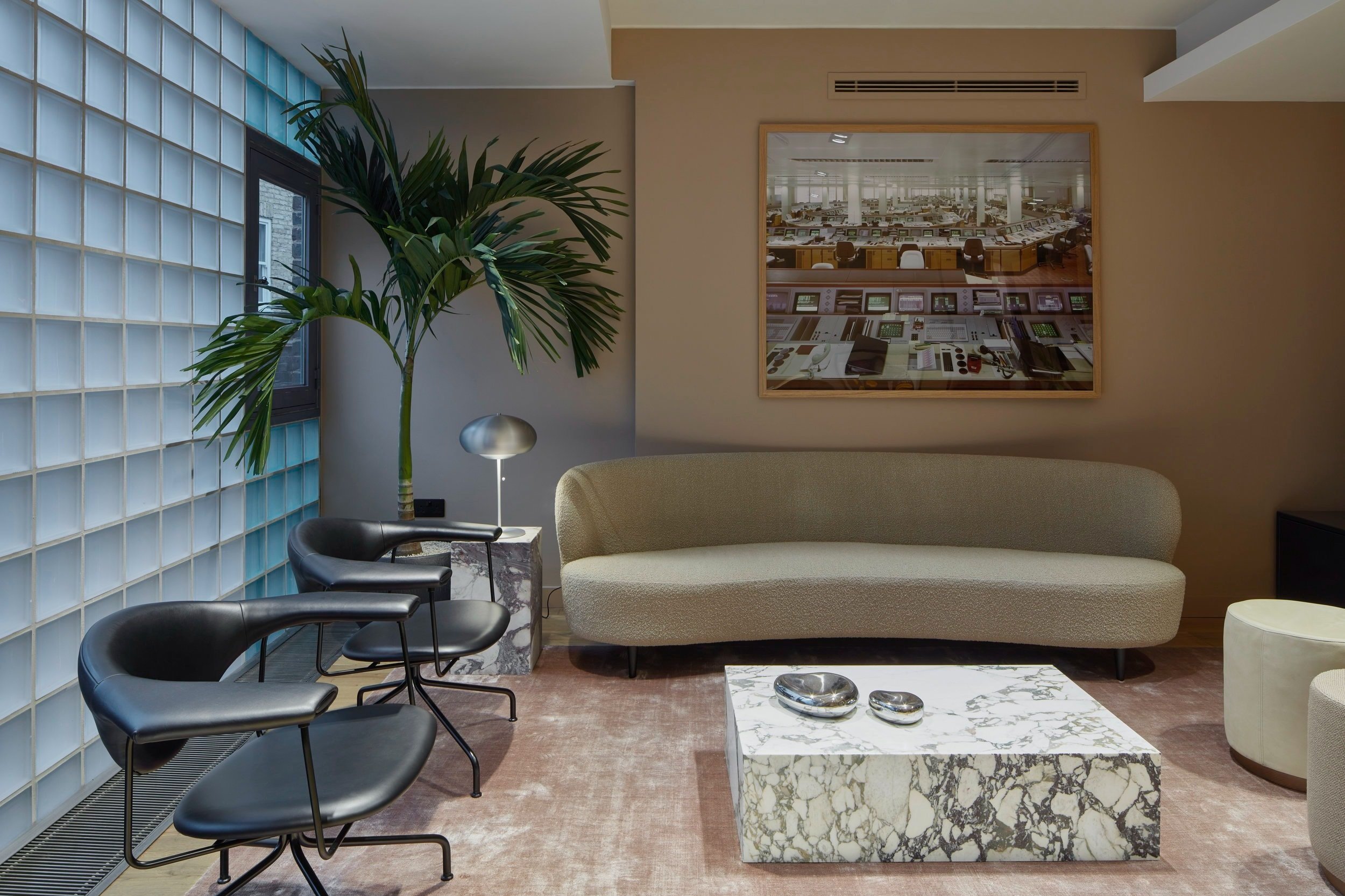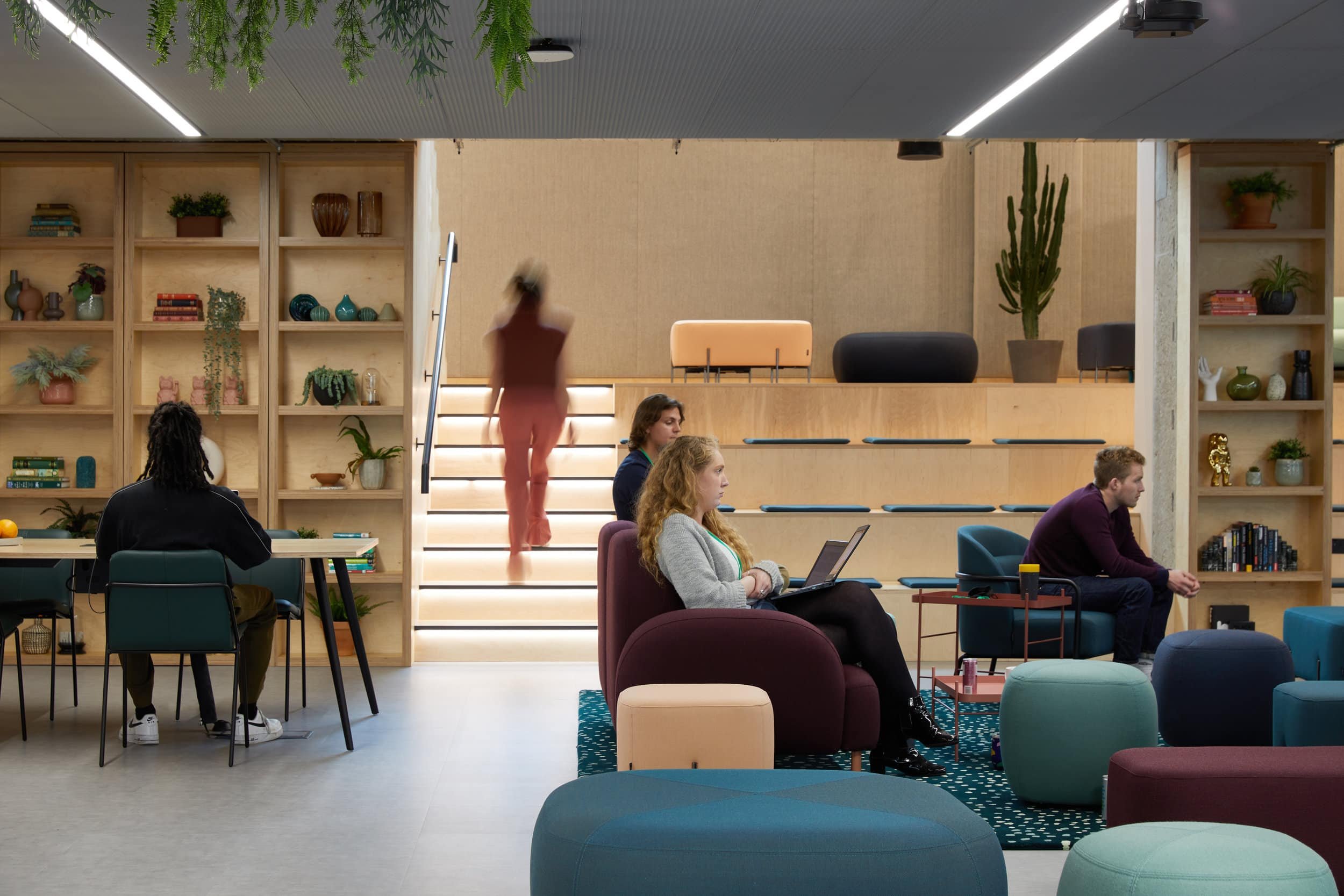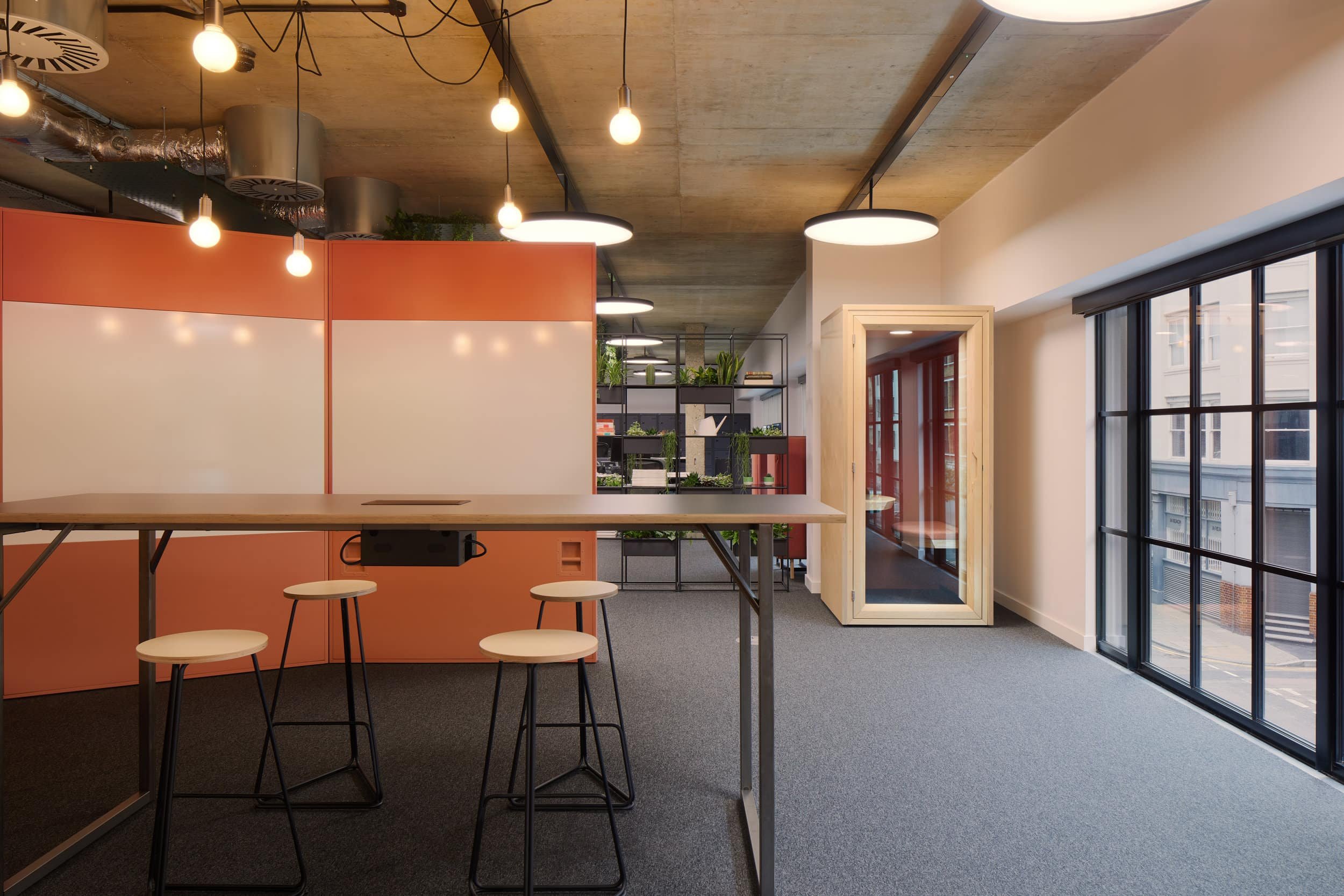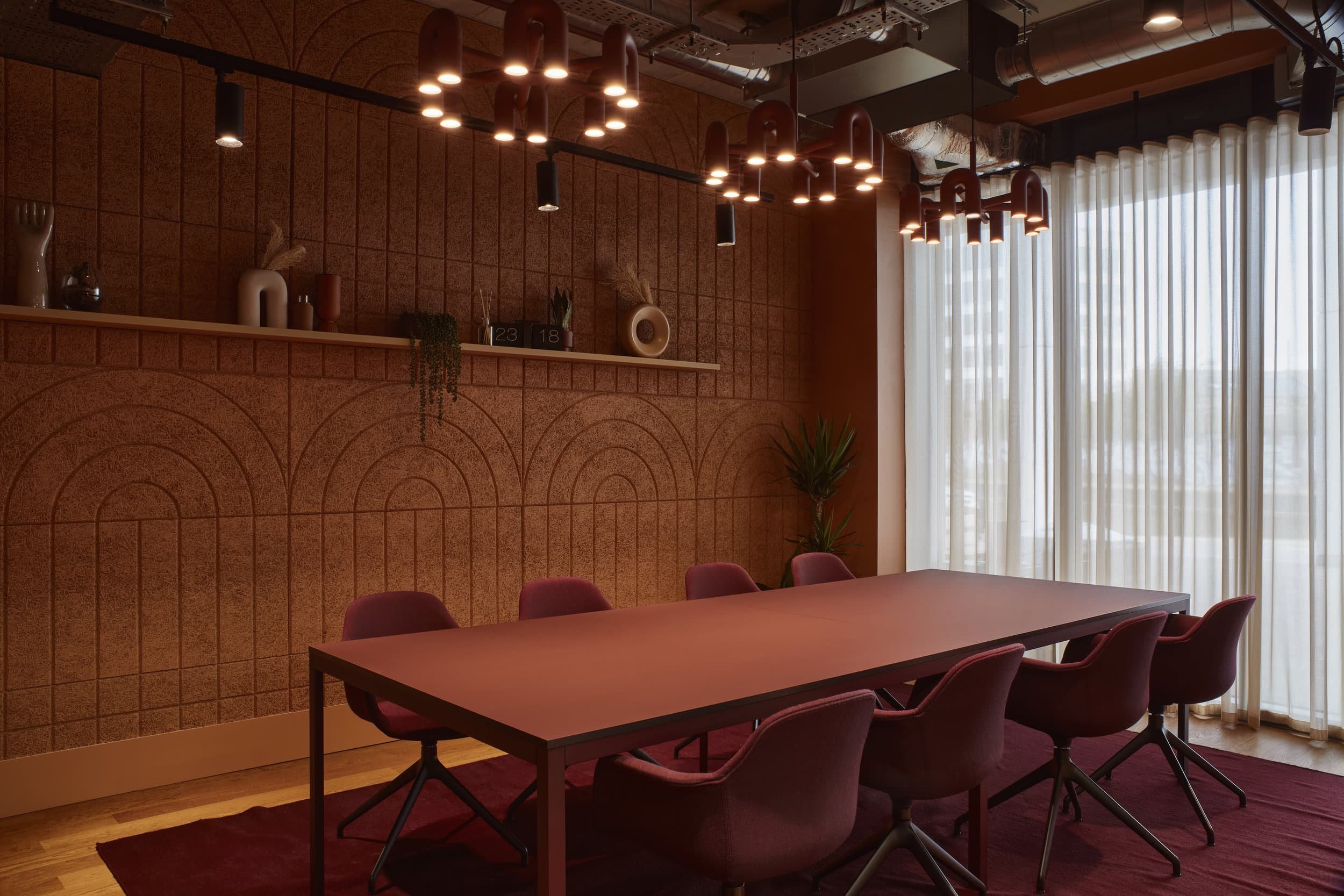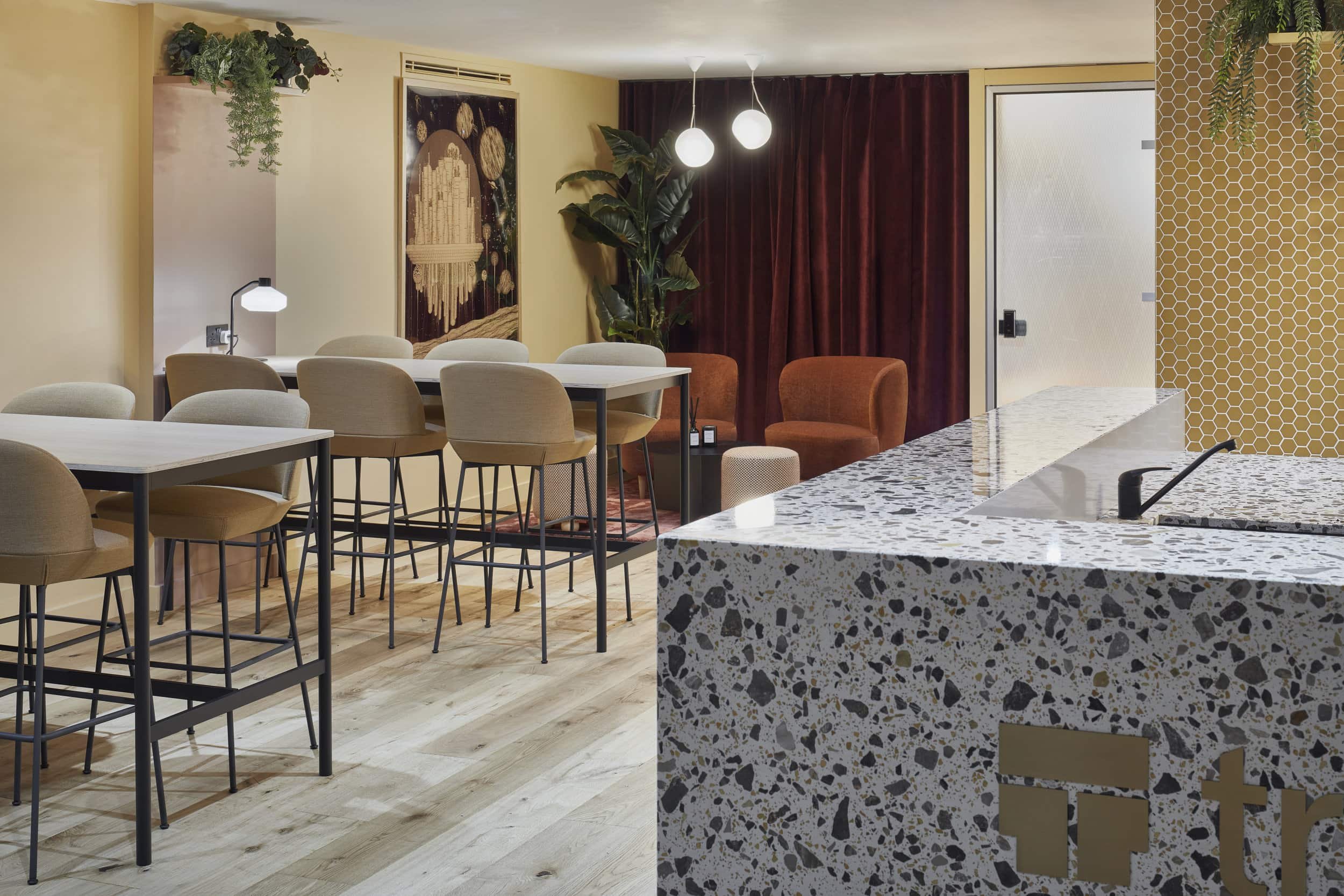The Influence of Workplace Evolution on Office Design Trends
In just 3,000 sqft, BenchSci’s Cambridge office space adopts a hospitality like feel, a variety of work and social settings plus a zen room
The last three years have kept workspace designers like Trifle* firmly on our most flexible toes. In the post-pandemic world of office design, we have become adept at navigating the unexpected and can often be found musing over what might be coming next ….
Ongoing trends
‘Resimercial’ and hospitality-influences
The incorporation of hotel-like and home-like amenities and features is not new in office design but it is certainly growing in popularity today. This is partly driven by employees demanding more of the workplace, that the spaces we travel to are worthy of a commute and also by the desire to spend our time in places that make us feel relaxed and inspired. The service industry model of looking after every need is inspiring a new wave of workspaces with concierge-style services and access to high quality food and beverages which in turn this is influencing the style of the communal areas, cafes, bars and lounges that we are asked to design.
Wellness
The wellbeing conversation is now at the forefront of most workspace design briefs - largely driven by the real need to put people’s physical and emotional health first and offer environments that reflect and support that. This means:
Biophilic design continues to be big news as the demand for connecting workers with nature by using greenery and natural materials is ever increasing.
Providing ergonomic comfortable furniture that supports wellbeing and effective working.
Ensuring the non-negotiable basics of physical comfort like natural light, quality air and lighting systems and temperature control are provided that in turn will reduce fatigue and boost the mood of employees.
Provision of wellness features such as zen spaces, meditation and prayer rooms and/or access to outside space.
A landscape of dynamic settings
In the early days of planning return-to-office spaces, there was a huge drive to increase the proportion of collaborative spaces. Whilst this is still a consistent request, we are now noticing a return to the requirement for focused and quiet working areas.
At Trifle* we have always advocated for a wide variety of types of space to suit different work modes, diverse personalities and neuro-divergence and now this element of choice is more important than ever. Work is not static - throughout the course of the day someone could require a traditional desk setup, a remote meeting set up, space to socialise, collaborative space and somewhere to recharge and think. Today’s workforce requires and expects human-centred amenities such as community events spaces, huddle rooms, scrum spaces and spaces for respite. The challenge is the ability to provide this range of settings in the same or smaller spaces so flexible solutions where appropriate are critical. We are well versed in designing multifunctional cafe areas that double up as informal meeting spaces, social areas or spaces for respite during the course of the working day.
Building in momentum
Remote-First principles
In every meeting held there could be someone dialling in and therefore meeting rooms, whatever their size, need to take this into consideration early on in the design stage. ‘Zoom’ rooms should be included in every office space for it is unlikely that we will return to a time where everyone is physically present at every meeting. Technology should be seamlessly integrated and considered at the beginning of every project to avoid chaotic cabling being added as an afterthought and to help to ensure that IRL meetings and the remote experience are equal.
Sustainability
The office sector is beginning to embrace increased eco-conscious ways of design. Ideally in the not too distant future these aspects should be integrated in every aspect of the design and fit out process. Certifications such as BREEAM and LEED look at the overall energy efficiency and footprint of a space whilst WELL Building Standard focuses on the wellbeing of occupants. A blend of these aspects is desirable and key to providing truly healthy and sustainable office spaces which have been shown to impact on the recruitment and retention of talent.
Home vs Office
Whilst we continue to see the benefits of home and remote working we believe that the 'in office' working experience should be elevated by designing a ‘honey pot’ of attractive amenities that the 'at home' work experience cannot offer. This should include the most seamless high-end tech, the best coffee, a variety of work settings, great spaces to socialise and host events….‘If you build it they will come’.
What’s next?
Utilising Smart technology
For many this kind of tech will feel out of reach today but will (*should) soon be the norm. If you’re looking for a new office space it would be wise to query how the developer and/or landlord is considering smart tech to help drive efficiencies within your building and therefore your investment.
Heat mapping in offices can be used to monitor energy efficiency. By understanding how space is used, leaders can identify areas where they may save energy by installing more efficient heating, cooling and lighting systems. This technology also allows employees to understand which spaces are in use and how full the office is at any given time. With hybrid working in full flow this can lead to more efficient use of the workspace.
Air quality is one of the most important yet undervalued aspects of our daily lives and smart technology exists to enable remote monitoring of this in the workplace. Office air that is too dry can cause electrical shortages, wreaking havoc on computer systems. If it’s too moist, there is a risk of mould. Studies show that the ideal temperature of an office is 21-22C (68-76F) and humidity levels between 40-60% prevent the spread of COVID-19 and other cold and flu viruses. High levels of CO2 creates brain fog, thus negatively affecting productivity, wellness, and happiness.
The Metaverse
Whilst seemingly the premise of Marvel movies, there are many companies, who over the next few years, will be installing smart mirrors into the office. These will act as a direct portal to the metaverse enabling remote colleagues to interact as though in real life with their colleagues in the office. If it sounds a bit sci-fi to you, be assured this technology already exists and some say it will be the answer to the hybridity conundrum. Time will tell!
Data-driven design
We are only three years into the evolution of work life that was thrown in the air by the global pandemic and with each year that passes since COVID first hit we can only seem to ‘expect the unexpected’. As yet, no real hard data exists to help us strategise the design of the office of the future, so we are reliant on regular open communication and on-the-go learning. This year, with some regularity around office usage, we should begin to see more data around how and when office space is being utilised. It will take longer to draw firm conclusions but as we start to analyse office facility usage, deeper insights should be revealed, leading us to better understand the post-pandemic needs and requirements of the next generation of offices.
Author: Emma Morley, Founder and Director
Emma founded Trifle* in 2010 after a career in marketing, event design and production. Frustrated by the fact that only advertising agencies had inspiring spaces she had a desire to make good design the norm for all office workers. Emma has worked across well over 150 interior projects during her career at the helm of Trifle*, she remains passionate about making amazing spaces but also making the industry more accessible, more human and more diverse.


